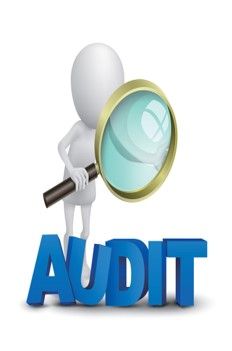Introduction:
What is an Audit?
According to ISO 19011, an audit is a systematic,
independent, and documented process for obtaining objective evidence and
evaluating it objectively to determine the extent to which the audit criteria
are fulfilled. This definition forms the foundation of auditing practices
within the pharmaceutical and food industries. ISO 19011 - Guidelines for auditing management systems

Types of Audits:
- 1st party audit: Internal audit
2nd party audit: External provider audit- Other external interested party audit
3rd party audit: Certification and/or accreditation audit- Statutory, regulatory and similar audit.
ISO 19011 Guidelines for auditing management systems, Introduction
Importance of Internal Audits (Self-Inspections)
GMP guidelines emphasize the necessity of self-inspections or internal audits to ensure the effectiveness and applicability of the Pharmaceutical Quality System.
Personnel, premises, equipment, documentation,
production, quality control, distribution of the medicinal products,
arrangements for dealing with complaints and recalls, and self-inspection,
should be examined at intervals following a pre-arranged program in order to
verify their conformity with the principles of Quality Assurance.
EU GMP Eudralex Ch9 SELF INSPECTION. 9.2
Developing Audit Procedures:
audit procedures should be developed and documented to
ensure that the planned audit schedule takes into account the relative risks of
the various quality system activities, the results of previous audits and
corrective actions, and the need to audit the complete system.
FDA Guidance for Industry Quality Systems Approach to Pharmaceutical CGMP Regulations, IV.D.2
Frequency of Self-Inspections:
The frequency with which self-inspections are conducted may
depend on company requirements but should preferably be at least once a year.
The frequency should be stated in the procedure.
WHO TRS 986 Annex 2, 8.4
Composition of Self-Inspection Teams:
Management should appoint a self-inspection team consisting
of experts in their respective fields who are familiar with GMP. The members of
the team may be appointed from inside or outside the company.
WHO TRS 986 Annex 2, 8.3
(1) To conduct the self-inspections periodically on the manufacturing control and quality control of the products in their manufacturing site,
(2) To report in writing the results of the self-inspections to the manufacturing manager, and
(3) To establish and maintain records of results of the
self-inspection
Japan Regulations for Manufacturing Control and Quality C ontrol of Drugs, Article 18
Reporting and Follow-Up:
A report should be made at the completion of a self-inspection. The report
should include:
(a) self-inspection results.
(b) evaluation and conclusions.
(c) recommended corrective actions.
WHO TRS 986 Annex 2, 8.5
Follow-up action
There should be an effective follow-up programme. The
company management should evaluate both the self-inspection report and the corrective actions as necessary
WHO TRS 986 Annex 2, 8.6
Conclusion
Auditing plays a crucial role in maintaining compliance with GMP standards in the pharmaceutical and food industries. By understanding the various types of audits, the importance of internal audits, and the necessary procedures and follow-up actions, organizations can ensure the quality and safety of their products while meeting regulatory requirements.
References
1. ISO 19011 - Guidelines for auditing management systems
1. ICH Q 7a Good Manufacturing Practice for Active Pharmaceutical Ingredients
2. FDA- 21 CFR – Part 211 CURRENT GOOD MANUFACTURING PRACTICE FOR FINISHED PHARMACEUTICALS
3.WHO, TRS 986, Annex 2, WHO good manufacturing practices for pharmaceutical products: main principles
4. EudraLex, Volume 4, Part 1 Chapter 9: SELF INSPECTION